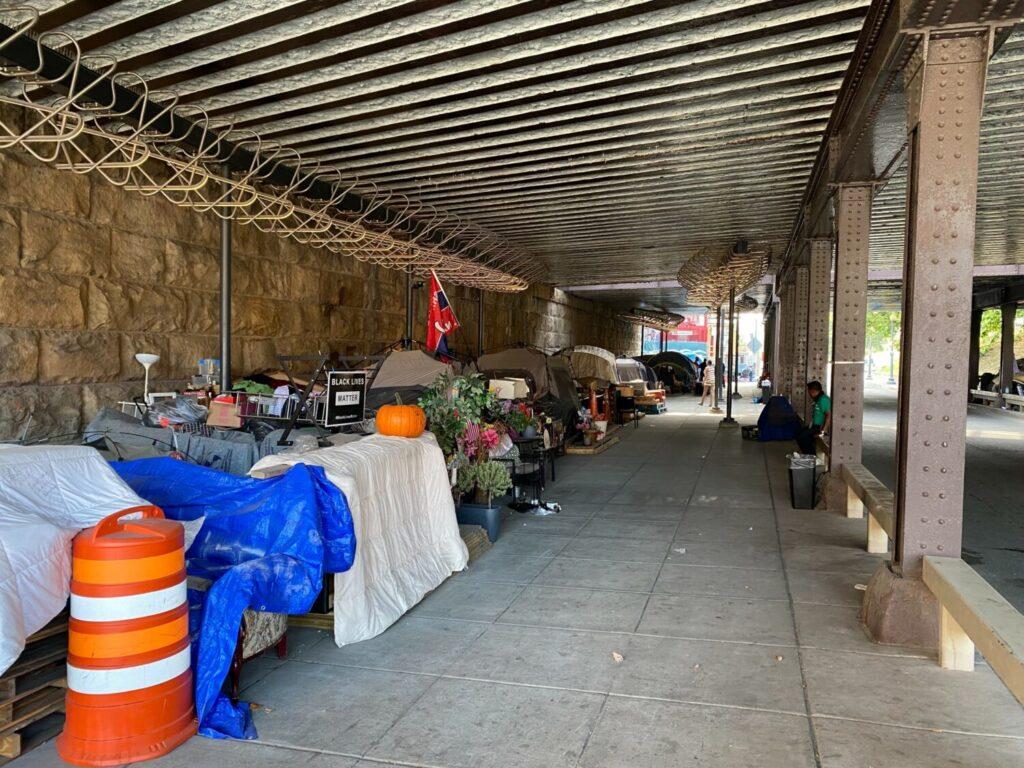Washington, D.C., saw its first hypothermia alert of the season Nov. 15, resulting in unhoused people being even more vulnerable to dangerous weather conditions.
The National Weather Service issued Washington, D.C.’s first overnight freeze warning of the season Nov. 3, while Mayor Muriel Bowser (D) activated the first hypothermia alert of the season Nov. 15. These announcements will be the first of many warnings issued as a result of low temperature and inclement weather throughout hypothermia season, which ends March 31. As a result, the District is taking steps to provide shelter for unhoused populations who are most at risk in the face of freeze advisories.

Officials declare hypothermia warnings when the temperature, factored with the wind chill, is expected to be below 32 degrees Fahrenheit or below 40 degrees Fahrenheit with a 50% or greater chance of snow, rain or sleet.
Bowser told District residents to look out for each other and said that the Shelter Hotline, a resource available to request transportation to shelters in the event of inclement weather, is always available for unhoused individuals, according to a press statement released just hours before the start of the hypothermia alert.
Hypothermia occurs when a person’s body temperature drops below 95 degrees Fahrenheit, resulting in heart failure, organ failure and a shutdown of the respiratory system, which could lead to death when left untreated.
Following the first hypothermia alert issued Nov. 15, which was in effect from 7 p.m. until 7 a.m. the next morning, the District opened five men’s shelters and four women’s shelters at various public spaces, including recreation centers and public libraries throughout the District, so that unhoused people had a place to seek protection from the cold temperatures outside.
According to Curtis Smith, interim public affairs specialist at the D.C. Department of Human Services (DHS), a District-wide winter plan outlines how to protect unhoused District residents as temperatures lower.
“DHS follows guidance from the Interagency Council of Homelessness’ FY22 Winter Plan to provide services to DC residents experiencing homelessness in hypothermic conditions,” Smith wrote in an email to The Hoya.
Resources available in the winter plan include services such as overnight warming sites, which allow unhoused individuals to seek a temporary break from cold temperatures, as well as transportation to shelters and meals.
Staff and unhoused individuals at shelters must wear a mask regardless of vaccination status, and even though capacity in the shelters will exceed COVID-19 limits in an effort to accomodate more people, pre-pandemic capacity will not be allowed in an effort to protect staff, volunteers and clients.
The Hypothermia Outreach Team (HOT), a volunteer service provided by Georgetown University’s Center for Social Justice (CSJ), works on the ground to help unhoused individuals find shelter from the cold, according to Ray Shiu, deputy director of the CSJ.
“In partnership with Georgetown Ministry Center (GMC) and other service providers throughout the city, HOT members conduct street outreach and serve to supplement and build capacity for outreach during the hypothermia season,” Shiu wrote in an email to The Hoya. “HOT volunteers help to prevent death from exposure and encourage unsheltered individuals experiencing homelessness to seek safety in available shelters.”
There are about 6,380 unhoused people living in the District who will be directly exposed to freezing winter temperatures, which puts them at an increased risk for hypothermia and other freeze-induced injuries such as frostbite. During this past winter, seven unhoused individuals died as a result of conditions associated with hypothermia or exposure to the cold in the District, while 114 hypothermia alerts were called throughout the season.
Based on the data from last year’s first hypothermia season during the COVID-19 pandemic, it is estimated that 1,500 men and 625 women will need individual beds for this winter’s hypothermia season.
According to Shiu, aiding unhoused individuals who are struggling during the cold winter months is essential work.
“This volunteer work is an important way for the Georgetown community to care for our own neighbors in need,” Shiu wrote.




















